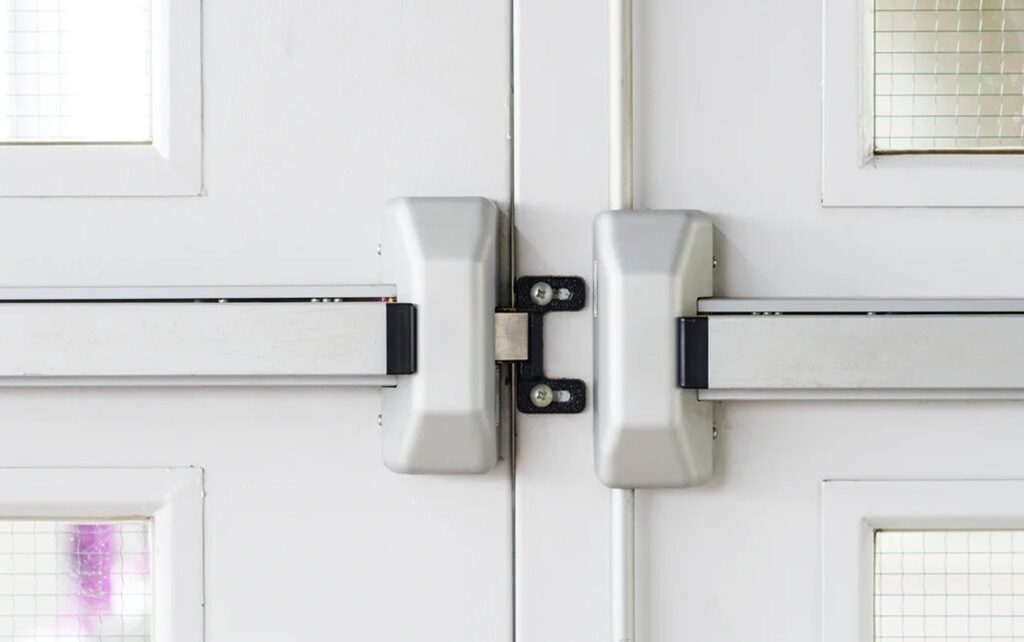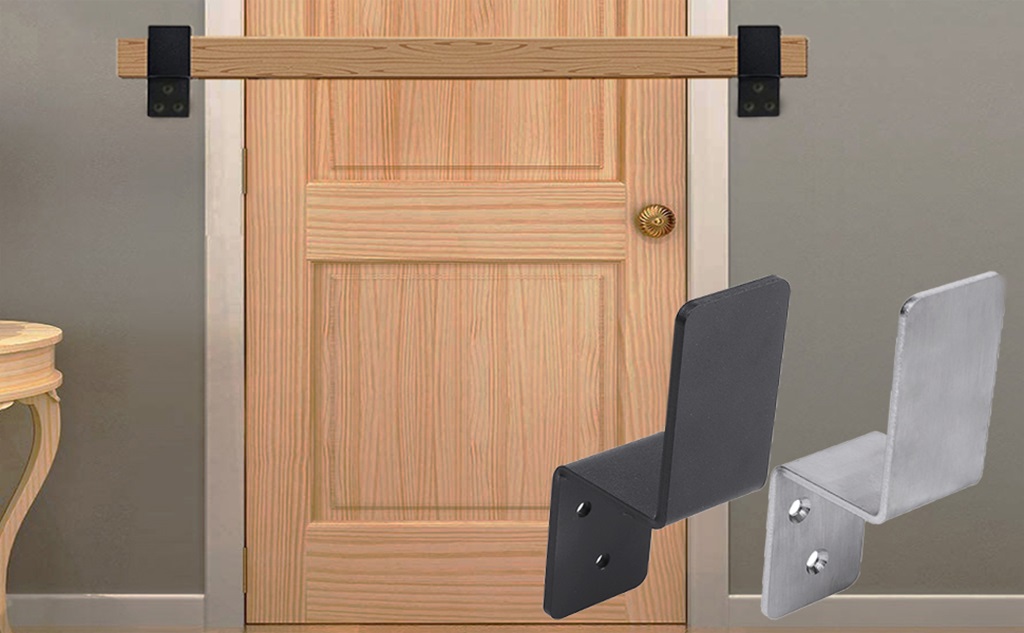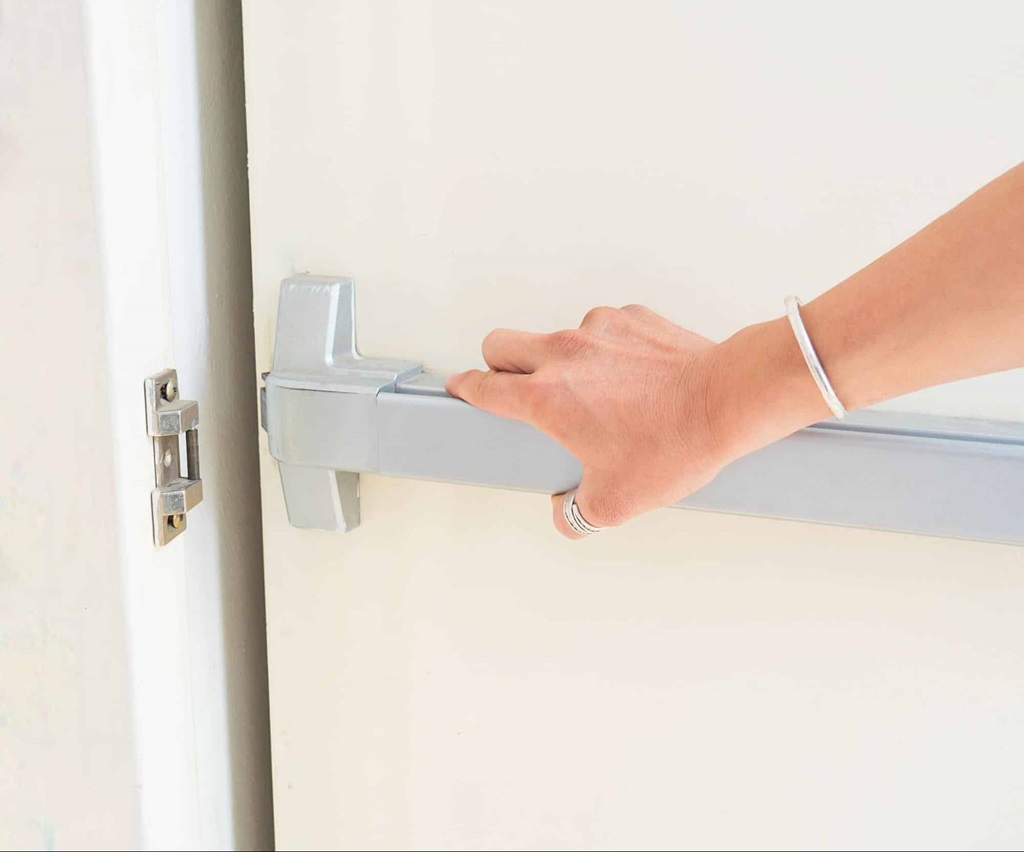Having an exterior door that swings outward can seem like a security liability. Doors that open inwards are easier to barricade from the inside. But never fear! With some clever DIY tricks and the right materials, you can transform an outward-swinging door into a barricade that can withstand a pretty serious breach attempt.
In this guide, we’ll walk through how to barricade a door that opens out. Follow along to transform your outward-swinging door into a veritable fortress. Let’s dive in!
The Challenge of Barricading Outward-Opening Doors
Doors that swing inward naturally prevent entry when closed. It’s easy to pile furniture or other heavy objects behind them. Outward-opening doors have the opposite issue. The door itself can’t barricade against inward force.
This weakness means we need to get creative with bracing and reinforcement. The goal is to prevent the door from swinging open at all.
When barricading an outward opener, we’re relying solely on the strength of the door frame and any additional bracing. But have no fear! With the right techniques and materials, you can make an outward-swinging door nearly impenetrable from the outside.
Choosing Your Barricading Method
There are a few main approaches to barricading an outward-opening door:
- Door braces – Brackets and wooden beams that wedge between the door and floor at an angle
- Frame reinforcement – Upgrading frame strength with boards, angle irons, or steel plates
- External barriers – Pile obstacles like furniture or sandbags outside the door
Each has pros and cons to weigh:
Door Braces
- Pros: Effective and adjustable, don’t permanently alter door or frame
- Cons: Can be bulky, require installation and removal each time
Frame Reinforcement
- Pros: Makes the whole frame stronger long-term
- Cons: Permanent mods, takes more work, still need a brace
External Barriers
- Pros: Quick and easy to pile objects as needed
- Cons: Less secure, obtrusive clutter outside the door
For most home security uses, internal door braces provide the best balance. They’re removable, reusable, and offer serious strength without major construction work.
In the rest of this guide, we’ll focus on how to build an ultra-strong internal door brace. But first, let’s make sure your door and frame are up to the task.
Assessing Your Door and Frame
Before deciding on any reinforcements, assess the existing strength of your door setup:
- Door material – Solid wood or metal is best. Hollow core or deteriorated doors are weak points.
- Frame material – Solid wood frames are ideal. Steel frames offer maximum strength.
- Hinges – High-quality hinges that are well-secured to the frame are important.
- Weather seals – Tight seals around the door prevent leverage points for prying.
- Locks – A sturdy deadbolt and strike plate help, but won’t substitute braces.
Inspect all these components. Repair or replace anything loose or deteriorated first. Upgrade locks and weather seals if needed.
For maximum door security, choose an exterior-rated solid wood or steel door already in a steel frame. But with the right reinforcements, even less sturdy doors can be made surprisingly secure.
DIY Door Brace Supplies and Tools
A basic DIY door brace requires just a few inexpensive supplies:
- 3/4″ plywood – For the vertical brace and the angled footer. At least 18″ wide.
- 2×4 lumber – For the horizontal brace. 8′ length.
- Carriage bolts – 3/8″ x 6″ size. Avoid lesser-grade hardware bolts.
- Washers and nuts – Match the carriage bolt size.
You’ll also need some basic tools:
- Power drill and bits
- Wrench or socket set
- Tape measure
- Safety glasses and dust mask
- Sandpaper
- Wood glue (optional)
Shop for the plywood and lumber first so you can take precise measurements of your door. With the materials and tools gathered, let’s start building!
How to Build a Strong Door Brace Step-By-Step
Follow these steps to construct an incredibly strong DIY barricade brace for an outward-swinging door:
Step 1 – Measure and Cut the Plywood Brace
- Measure the exact width of your door opening at the top, middle, and bottom. Write down the smallest width.
- Cut a piece of 3/4″ plywood to this exact door width. This will be the vertical brace.
- Cut a second plywood piece 18″ wide by 24″ tall. This is the angled footer.
Step 2 – Measure and Cut the 2×4 Horizontal Brace
- Measure the exact height of your door opening from floor to top edge.
- Cut a 2×4 board to this exact door height.
- This horizontal 2×4 brace will connect the plywood pieces.
Step 3 – Mark the Angle on the Footer
- Place the footer plywood flat on the floor in front of the door.
- Prop the vertical brace plywood against the door. Don’t attach it yet.
- Place the horizontal 2×4 brace under the vertical brace, so it forms an upside-down “T”.
- Trace a line across the footer plywood at the precise angle where the 2×4 brace meets it.
Step 4 – Drill Bolts Through the Vertical Plywood Brace
- Drill holes through the vertical plywood brace. Space them every 12 inches vertically.
- On the traced angle line, drill evenly-spaced holes to match the vertical brace.
- Use a 3/8″ drill bit matched to the size carriage bolt size you purchased.
Step 5 – Screw the Bolts Into the Horizontal 2×4 Brace
- Flip over the plywood brace so the back with the bolt holes is facing up.
- Take each carriage bolt and screw it into the center of the 2×4 brace, leaving 2″ sticking out.
- The threaded end goes into the 2×4, smooth bolt end sticks upwards.
- The 2×4 should end up centered on the plywood brace.
Step 6 – Attach the Footer
- Stand the vertical plywood brace and attach the 2×4 brace to the door opening.
- Have a helper press firmly or temporarily prop it in place.
- Slide the footer plywood into place so the protruding bolts go through the drilled holes.
- The footer should sit at the measured angle against the floor.
Step 7 – Secure with Washers and Nuts
- With the braces held in position, slide a washer and nut onto each protruding carriage bolt.
- Tighten down the nuts with a wrench until very snug.
- Check that the contraption is square and level in the door opening.
- Add wood glue between the plywood and a 2×4 brace for maximum strength. Allow to dry overnight.
When installed, the plywood presses firmly into the door frame, while the angled 2×4 brace resists any inward force. Required prying force is dispersed evenly across multiple carriage bolts.
This DIY brace design can withstand over 1,000 lbs of force! For even greater strength, keep reading.
Reinforcing the Frame and Hinges
For extreme security, consider adding reinforcements directly to the door frame:
- Add wood boards – Screw planking over the jambs and header. Choose exterior-rated plywood or 2x lumber.
- Install steel L-brackets – Position L-brackets high and low on each jamb for maximum support. Lag bolt into studs.
- Add steel plates – Cover the jambs and header with steel security plates, attached with long screws.
Upgrading the door hinges is also wise:
- Use longer hinge screws – Replace the short screws with 3-4″ wood screws into the frame.
- Install hinge jamb guards – Affix steel plates over each hinge side to prevent pin removal.
- Add more hinges – Increase from 2 or 3 up to 6 hinges for even force distribution.
These hardcore hardware upgrades make the door extremely tough to knock down or pull open by force. For many homes, just some extra long hinge screws will do the trick.
Conclusion
Transforming an outward-opening door into a highly secure barricade is doable with the right techniques. A homemade wood brace prevents the door from swinging open while reinforcing the frame and hardware resists brute force entry. Observe basic construction principles, disguise your work, and practice installing and removing the brace quickly. No more feeling vulnerable with an outward opener! Quietly turn it into your home’s strongest perimeter defense.
FAQs
How much force can a homemade brace withstand?
It depends on the design, but a braced solid wood door in a reinforced frame can easily withstand over 1,000 lbs of force from battering prying tools, or shoulder ramming.
Should I brace the door every night?
It’s best to brace nightly for homes in unsafe areas or during emergencies. For lower-risk homes, brace only when away for extended periods.
What if I need to exit quickly in an emergency?
Make sure your brace can be removed quickly from the inside. Practice installing and removing it rapidly. An emergency hammer by the door can also smash the brace apart.
Is there a minimum door or frame thickness for bracing?
Thinner hollow core doors and frames are harder to reinforce effectively. Aim for a minimum of 1-3/4 inches thick for both. Solid wood or metal is best.
What if my door opens outward the wrong way?
Doors that open outward but swing the wrong way for a brace can still be reinforced using door jamb guards and extra hinge screws into the frame.




